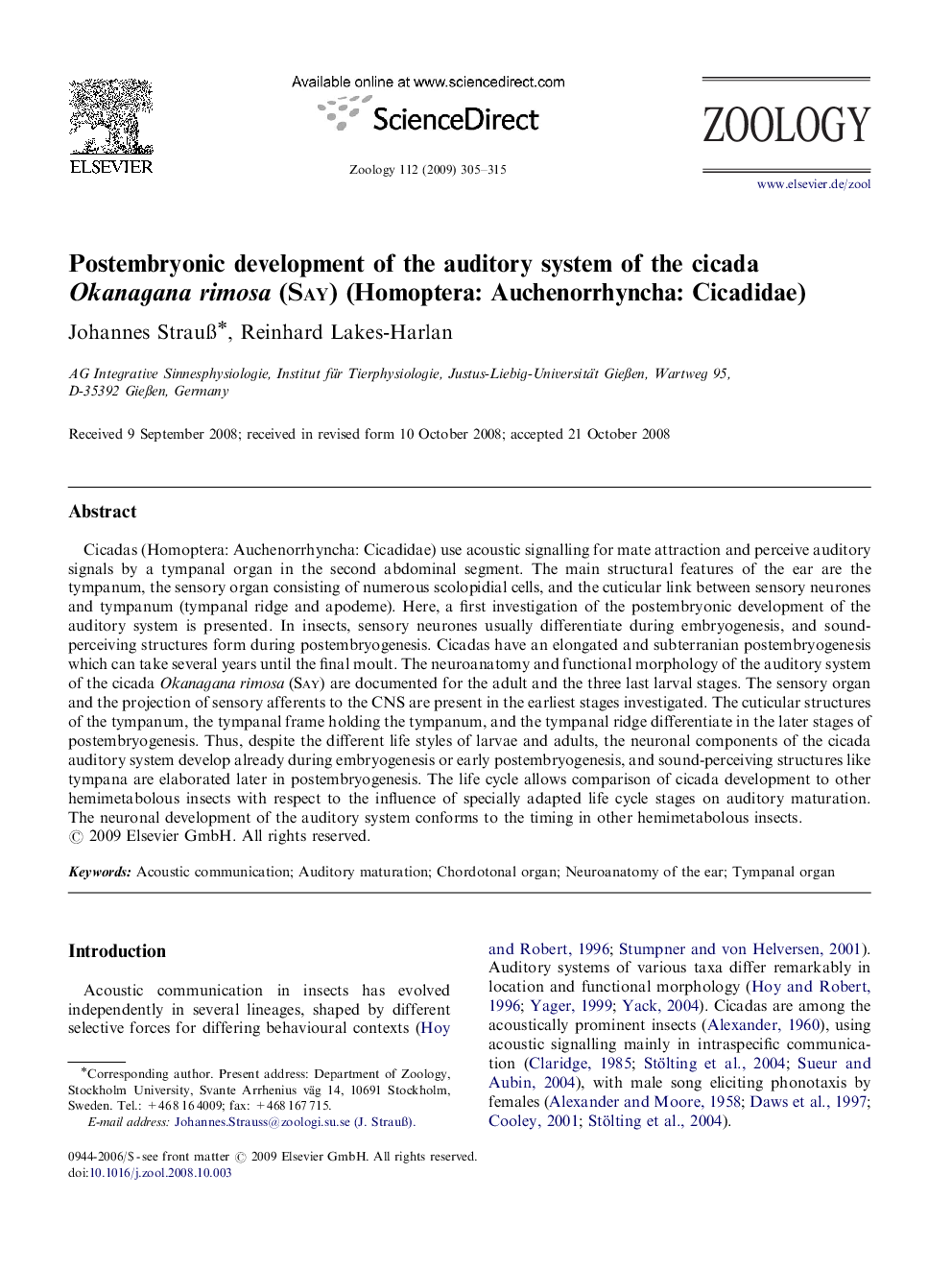| Article ID | Journal | Published Year | Pages | File Type |
|---|---|---|---|---|
| 2791315 | Zoology | 2009 | 11 Pages |
Abstract
Cicadas (Homoptera: Auchenorrhyncha: Cicadidae) use acoustic signalling for mate attraction and perceive auditory signals by a tympanal organ in the second abdominal segment. The main structural features of the ear are the tympanum, the sensory organ consisting of numerous scolopidial cells, and the cuticular link between sensory neurones and tympanum (tympanal ridge and apodeme). Here, a first investigation of the postembryonic development of the auditory system is presented. In insects, sensory neurones usually differentiate during embryogenesis, and sound-perceiving structures form during postembryogenesis. Cicadas have an elongated and subterranian postembryogenesis which can take several years until the final moult. The neuroanatomy and functional morphology of the auditory system of the cicada Okanagana rimosa (Say) are documented for the adult and the three last larval stages. The sensory organ and the projection of sensory afferents to the CNS are present in the earliest stages investigated. The cuticular structures of the tympanum, the tympanal frame holding the tympanum, and the tympanal ridge differentiate in the later stages of postembryogenesis. Thus, despite the different life styles of larvae and adults, the neuronal components of the cicada auditory system develop already during embryogenesis or early postembryogenesis, and sound-perceiving structures like tympana are elaborated later in postembryogenesis. The life cycle allows comparison of cicada development to other hemimetabolous insects with respect to the influence of specially adapted life cycle stages on auditory maturation. The neuronal development of the auditory system conforms to the timing in other hemimetabolous insects.
Related Topics
Life Sciences
Agricultural and Biological Sciences
Animal Science and Zoology
Authors
Johannes StrauÃ, Reinhard Lakes-Harlan,
